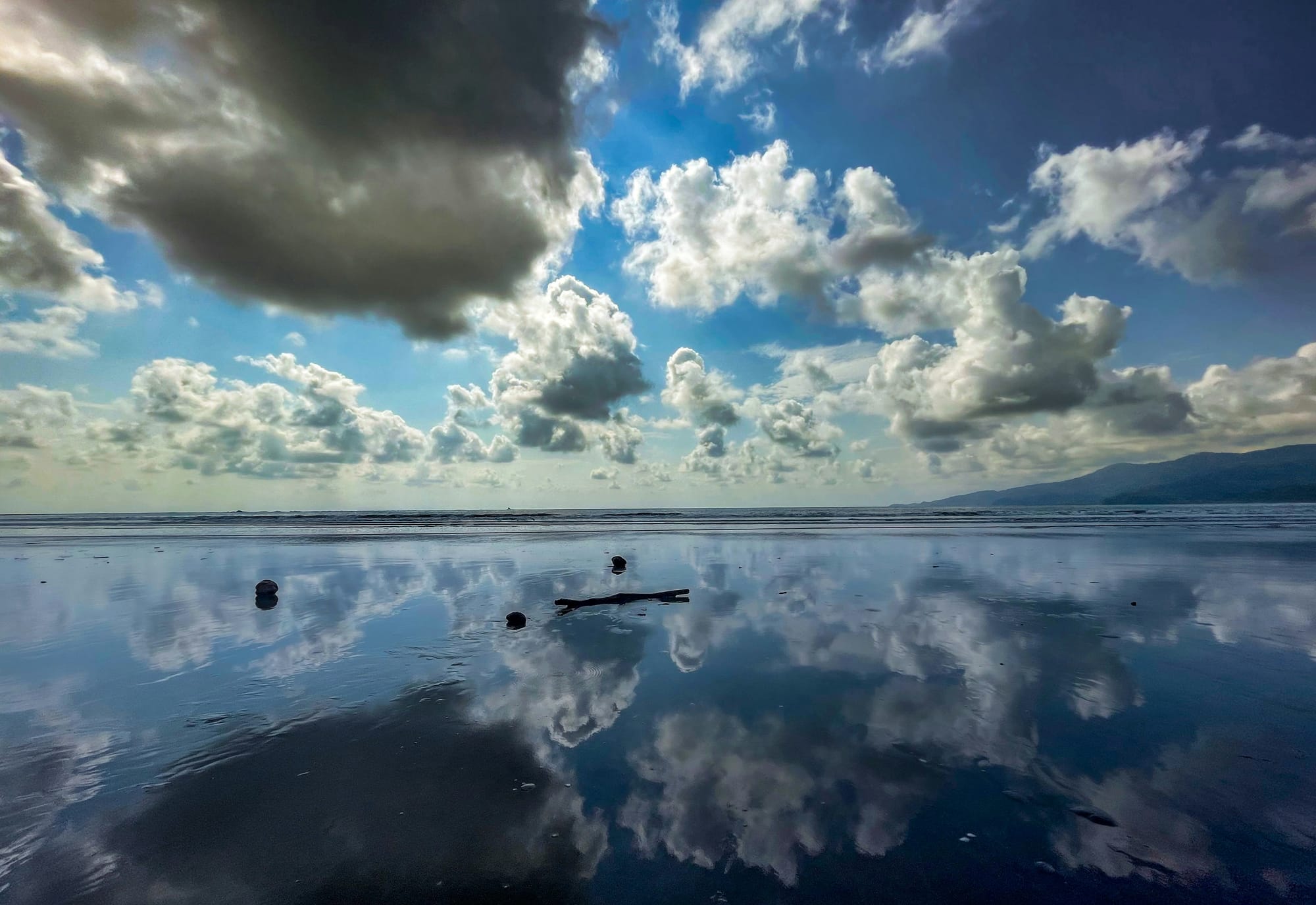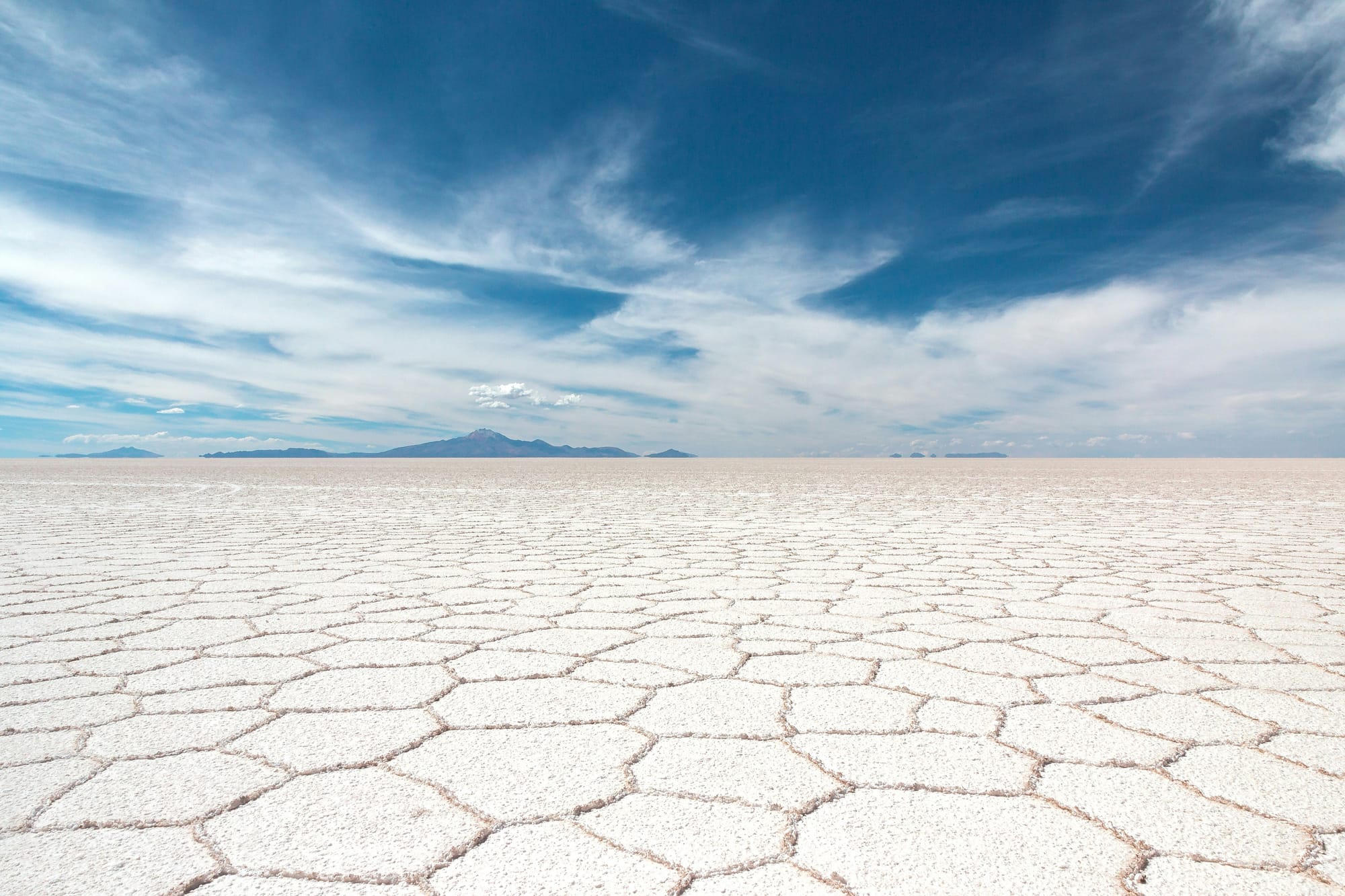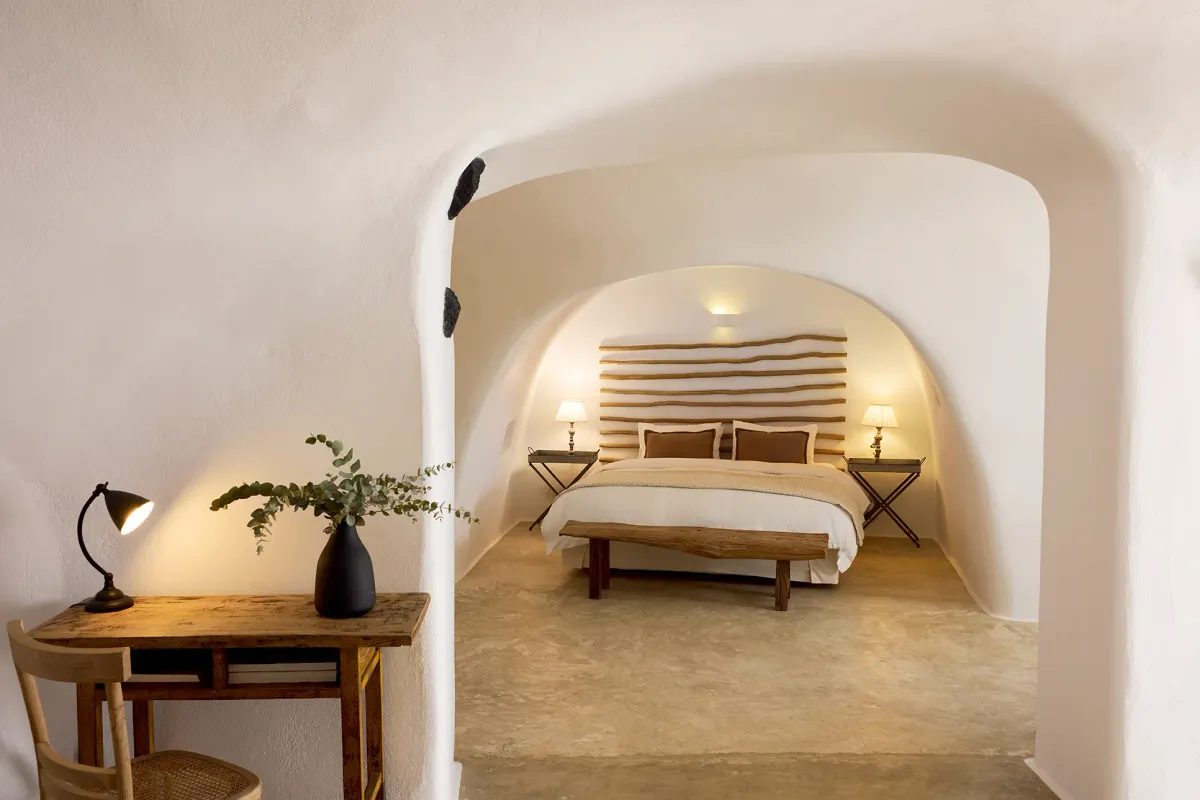Welcome to the White Desert Wonder: Salar de Uyuni, Bolivia
As home to the world's largest lithium reserves and an ecosystem, the Salar de Uyuni, Bolivia, represents natural beauty and global significance in the transition to renewable energy.

Imagine walking on clouds: soft and white. The best part? It has a mirror effect—during the rainy season—that transforms you not only into the sky, but also into a seemingly altered reality. Welcome to the Salar de Uyuni, Bolivia.
Stretching across 10,582 square kilometers (4,086 square miles) of the Bolivian Altiplano, Salar de Uyuni stands as the world's largest salt flat and one of South America's most extraordinary natural phenomena.
What is the Salar de Uyuni, Bolivia?
The Salar de Uyuni, 40,000 years. It formed when the ancient lakes—Minchín and Tauca—dried up, leaving behind a salt crust estimated to contain 10 billion tons of salt. The salt flat reaches depths of 2 to 10 meters (6.5 to 33 feet).
Beneath this white desert lies something even more valuable: approximately 50 to 70% of the world's lithium reserves. This chemical element is crucial for modern battery and electric vehicle technology.

What to do and what to avoid?
Permitted Activities
- Photography tours: Perspective and mirror-effect photography sessions.
- Island visits: Explore Incahuasi (Fish Island) with its giant cacti and coral rock formations.
- Wildlife watching: Observe flamingos, Andean foxes, viscachas, and over 80 bird species.
- Stargazing: Some of the clearest night skies in the world.
- Train Cemetery exploration.
- Cultural experiences: Visit local salt-mining communities and learn traditional extraction methods.
- Hot spring visits: Natural thermal baths at Polques or Sol de Mañana geysers.
Strictly Prohibited Activities
- Littering: Absolutely no trash disposal on the Salar.
- Graffiti or carving.
- Driving without permits: Only licensed tour operators can drive on the Salar.
- Removing salt or minerals to take home as souvenirs.
- Drone usage without authorization: Requires special permits from local authorities.
- Disturbing wildlife: Approaching flamingo nesting areas or chasing animals results in fines.
- Unauthorized camping: Wild camping is restricted to preserve the ecosystem.

Uyuni Salt Flat: Significance
The Salar de Uyuni, Bolivia, one of South America's poorest nations, Uyuni Salt Flat represents cultural heritage and economic potential. The salt wonder generates approximately $60-80 million annually through tourism alone, directly benefiting local communities in the Potosí and Oruro departments. The lithium deposits beneath could potentially transform Bolivia's economy, though extraction remains carefully controlled to balance development with environmental preservation.
Indigenous Aymara communities have lived around the Salar for centuries, traditionally harvesting salt and managing llama herds. Today, many community members work as guides, hotel operators, and artisans, creating a sustainable tourism model that preserves their cultural identity while providing economic opportunities.

How to get there?
Location: Salar de Uyuni sits in southwest Bolivia, near the crest of the Andes at an altitude of 3,656 meters (11,995 feet) above sea level. The town of Uyuni serves as the primary gateway.
Access Options:
- By Air: Flights from La Paz to Uyuni (Joya Andina Airport) take approximately 45 minutes. Airlines include Boliviana de Aviación and Amaszonas.
- By Bus: Overnight buses from La Paz (10-12 hours) or Sucre (7-8 hours) are budget-friendly options, though roads can be rough.
- By Train: Limited service available from Oruro, offering a scenic journey through the Altiplano.
Best Time to Visit
There are only two seasons to visit the Salar de Uyuni in Bolivia.
- Rainy Season (December-April): Peak time for the famous mirror effect when a thin layer of water transforms the salt flat into the world's largest natural mirror. While January-March offers the most reliable reflections. However, some areas may be inaccessible due to flooding.
- Dry Season (May-November): The salt crust forms stunning hexagonal patterns stretching to the horizon. Clearer access to all areas, including Incahuasi Island (Fish Island) with its giant cacti. June-August brings freezing nighttime temperatures (as low as -20°C/-4°F) but crystal-clear skies.


Photos by Unsplash.
Finding Reliable Local Guides
Never travel to the Salar independently without a guide. The flat's vast, featureless expanse has no GPS markers, cell phone coverage is limited, and vehicles can become stuck in wet salt.
Where to Find Guides:
- Uyuni town center: Multiple tour agencies line Avenida Ferroviaria and Avenida Potosí.
- Recommended operator types: Look for agencies certified by the Bolivian Tourism Ministry (Viceministerio de Turismo).
- Community-based tourism: Organizations like "Comunidad de Operadores de Turismo Uyuni" connect travelers with local indigenous guides.
- Hotel concierges: Reputable salt hotels can arrange vetted tours.
- Average tour costs: 1-day tours: $25-40 USD per person; 3-day tours (including Eduardo Avaroa Reserve): $120-200 USD.
Red flags to avoid: Extremely cheap tours often mean poorly maintained vehicles, inadequate food, or unlicensed drivers. Ask about vehicle condition, emergency equipment, and oxygen supplies.
You can find more and exclusive information on the official website of the Salar de Uyuni.

Useful information: Salar de Uyuni, Bolivia
- While Salar de Uyuni, Bolivia, is generally safe for visitors, several factors require careful attention:
- Altitude Sickness (Soroche): At nearly 3,700 meters, altitude sickness affects approximately 40-50% of lowland visitors. You can experience headaches, nausea, dizziness, and fatigue.
- Extreme Temperature Swings: Daytime temperatures can reach 20°C (68°F) while nights plummet to -25°C (-13°F) in winter.
- Sun Exposure: The white salt reflects up to 95% of UV radiation, creating an intense exposure risk. Sunburn and snow blindness can occur within hours without proper protection. The Salar has one of the highest UV indexes in the world.
- Limited Infrastructure: No gas stations, hospitals, or rescue services exist on the salt flat itself. Cell phone coverage is virtually non-existent. Tours must be self-sufficient with fuel, food, water, and first aid supplies.
- Vehicle Incidents: Driving on wet salt can be treacherous. Choose operators with 4x4 vehicles in good condition and experienced drivers familiar with seasonal conditions.
Practical Tips for an Unforgettable Journey
Pre-Trip:
- Book tours at least one week in advance during high season (December-March, July-August).
- Verify your tour includes insurance, oxygen tanks, and emergency communication devices.
- Break in your hiking boots before the trip.
- Consider travel insurance covering high-altitude activities.
During Your Visit:
- Bring small bills (bolivianos) for tips, bathroom fees, and snacks—many places don't accept cards.
- Respect indigenous communities and ask permission before photographing people.
- Follow the "leave no trace" principle religiously.
- Keep cameras and electronics in sealed bags when not in use to prevent salt damage.
Don’t forget to pack
- Sunscreen SPF 50+ (reapply every 2 hours).
- Lip balm with SPF.
- Personal medications (including altitude sickness pills like Diamox).
- Headlamp with extra batteries.
- Reusable water bottle (3+ liters capacity).
- Thermal base layers (top and bottom).
- Sunglasses with UV400 protection (essential—snow blindness risk).
I'm so glad you made it this far. Plan V is an independent magazine, and your donation allows me to continue doing this.
See you soon.
Thank you!
FAQS
What is special about Salar de Uyuni?
Salar de Uyuni holds multiple unique distinctions that make it truly exceptional. It is the world's largest salt flat, spanning over 10,500 square kilometers—roughly the size of Jamaica. During the rainy season, it transforms into the planet's largest natural mirror, creating surreal reflections that blur the line between earth and sky.
What is the story of the Salar de Uyuni?
The story begins approximately 40,000 years ago during the Pleistocene epoch. The Bolivian Altiplano was then covered by giant prehistoric lakes—first Lake Minchin, and later Lake Tauca, which at its peak was one of the largest lakes in South America. These massive bodies of water were remnants of ancient inland seas that once covered much of the region.
Over tens of thousands of years, dramatic climate changes caused these lakes to gradually evaporate. As the water disappeared, it left behind layers of salt and other minerals that had been dissolved in the water.
Is Salar de Uyuni a wonder of the world?
While Salar de Uyuni is not officially listed among the New Seven Wonders of the World (like the Great Wall of China, Machu Picchu, and the Taj Mahal), it is widely considered one of Earth's most spectacular natural wonders and frequently appears on "bucket list" and "world's most amazing places" rankings by major travel publications.
The salt flat has been recognized by numerous prestigious travel and nature organizations. National Geographic has featured it multiple times as one of the world's most extraordinary landscapes.
What is the world's largest natural mirror?
Salar de Uyuni holds the title of the world's largest natural mirror. During Bolivia's rainy season (roughly December through April), rainfall creates a thin layer of water—usually just a few centimeters deep—across portions of the 10,582-square-kilometer salt flat. Because the underlying salt crust is extraordinarily flat (varying by less than one meter in elevation across the entire expanse), this water layer spreads evenly across the surface rather than forming puddles or flowing away.






